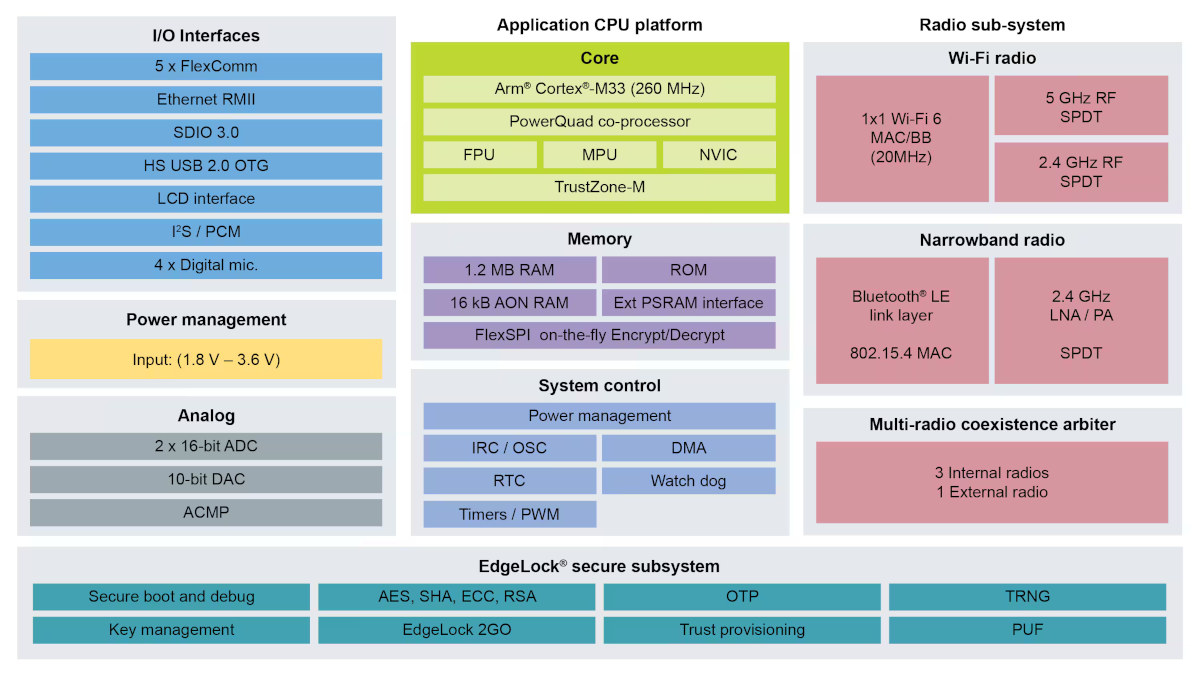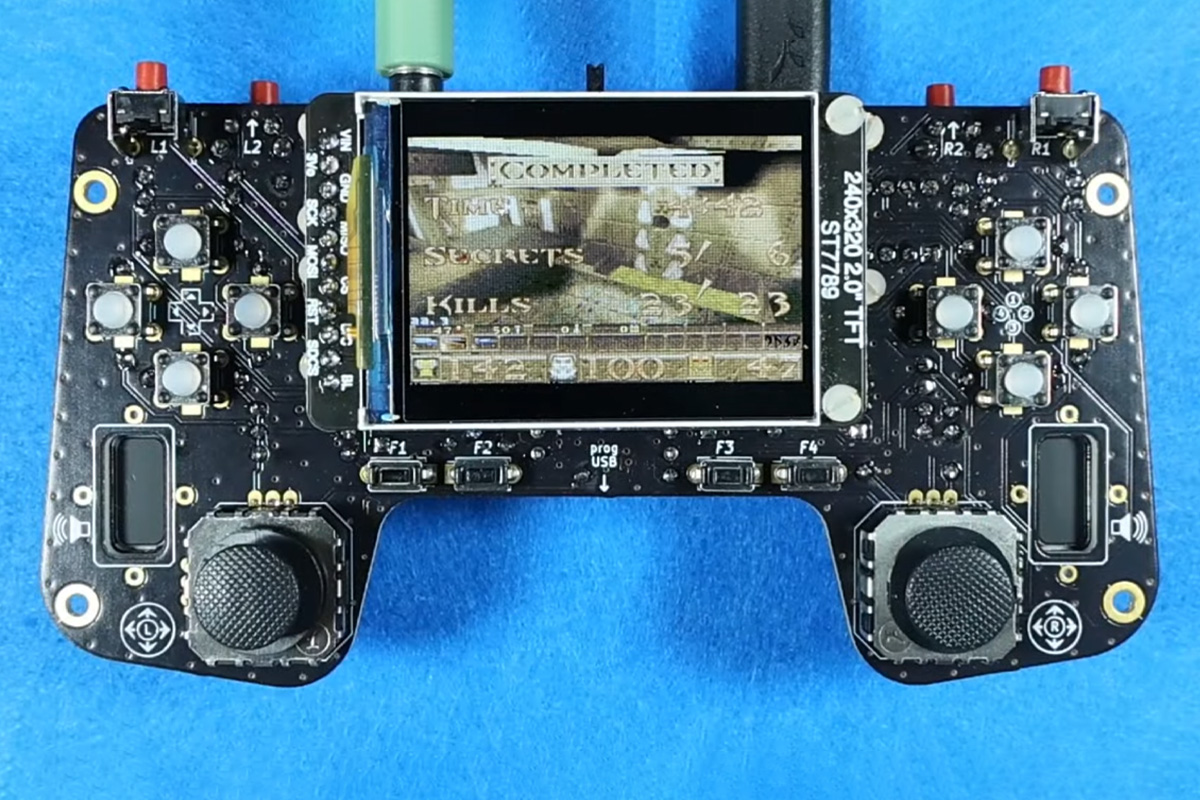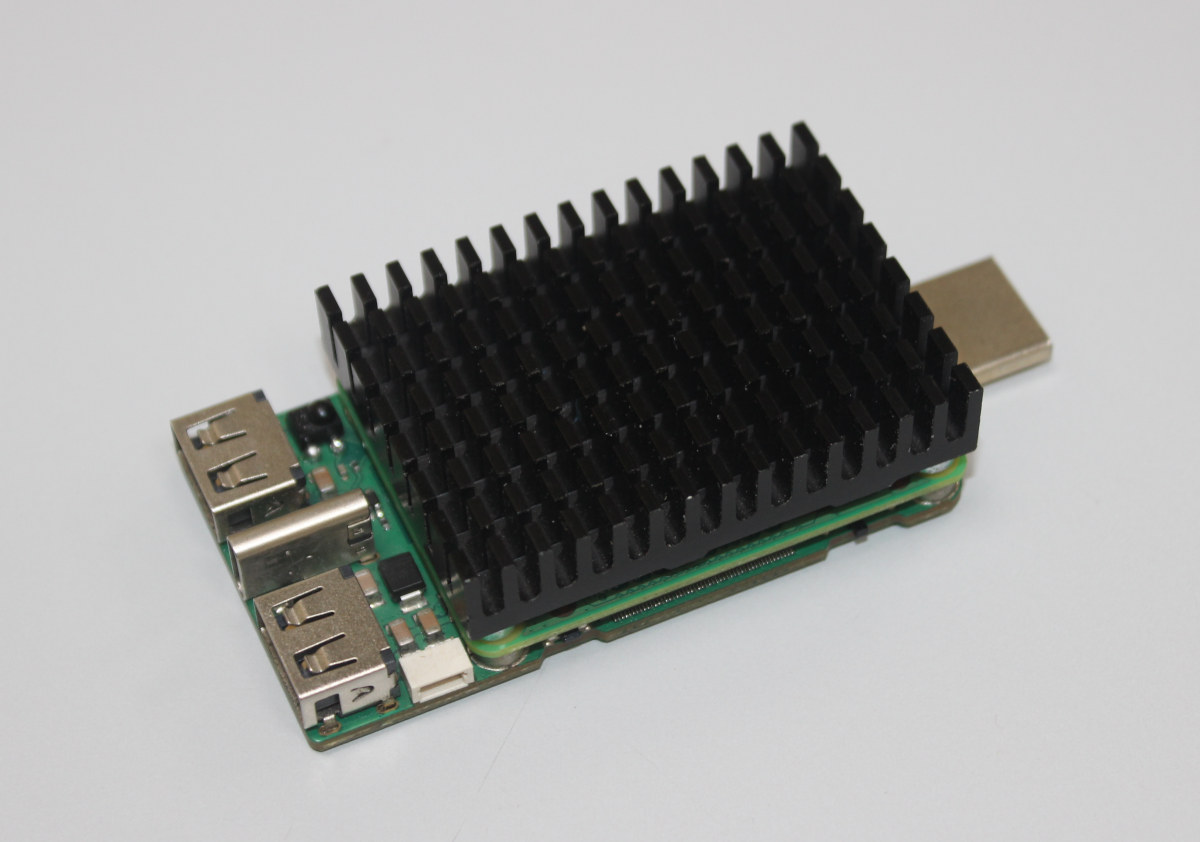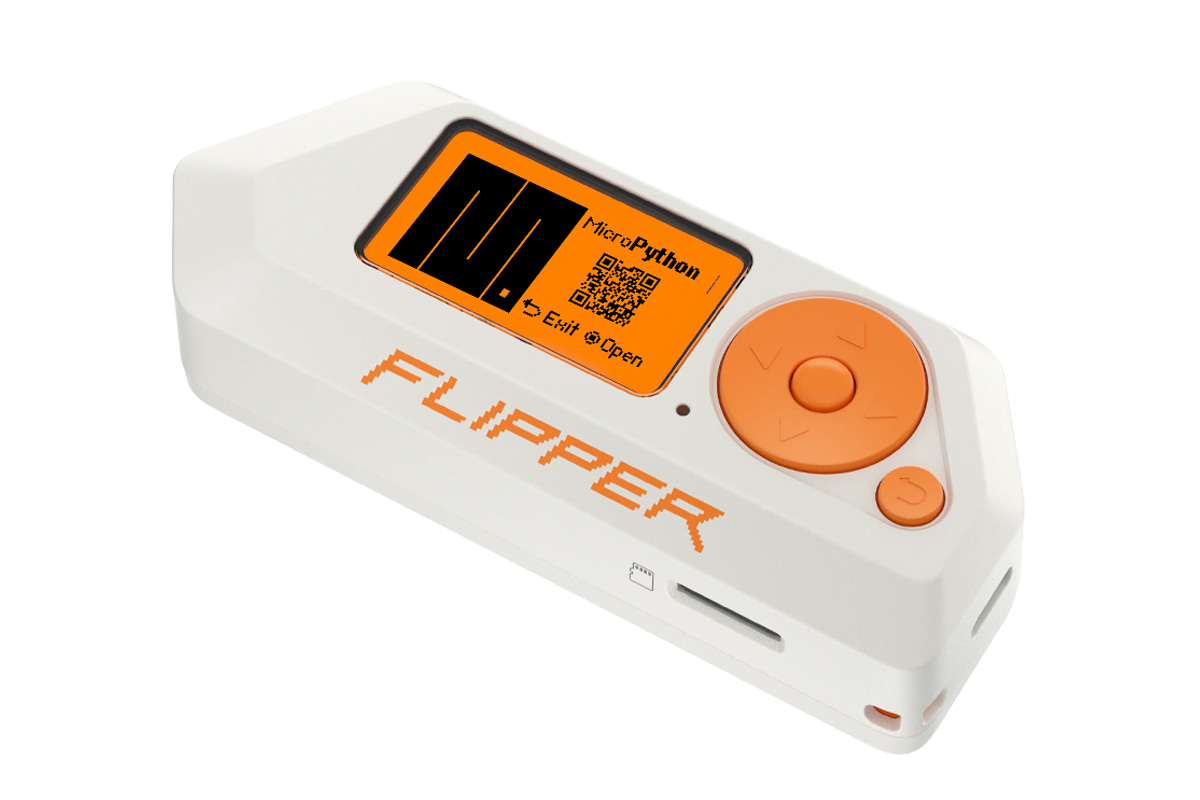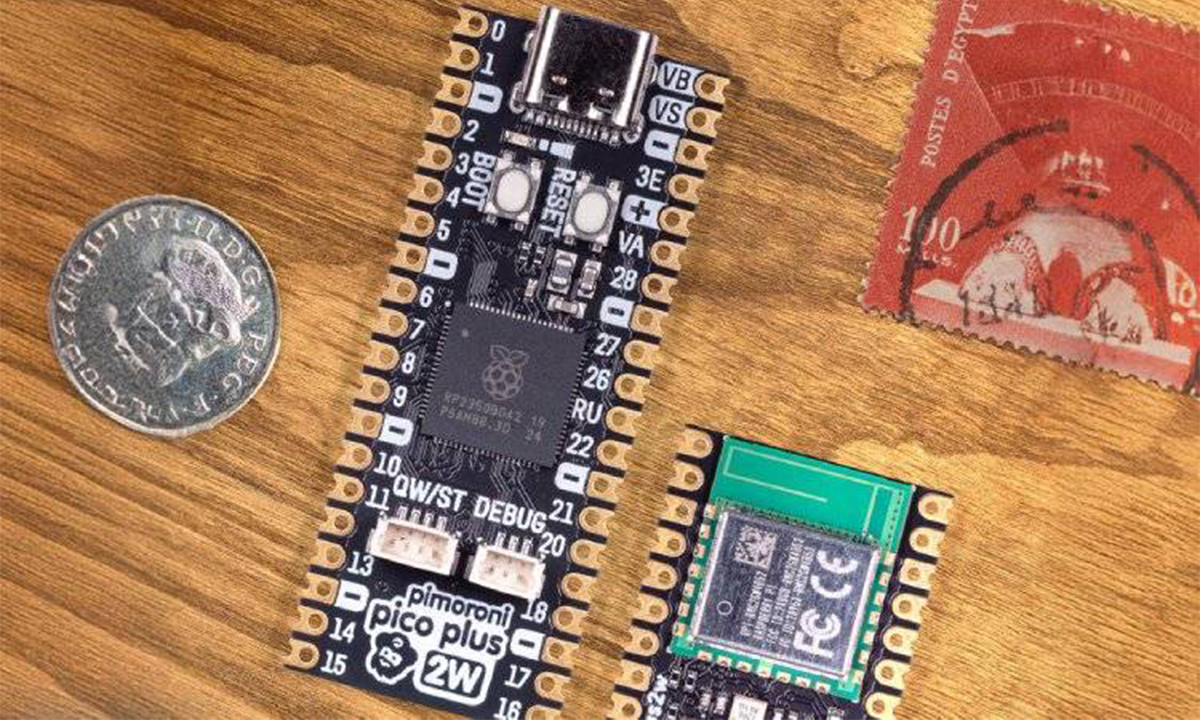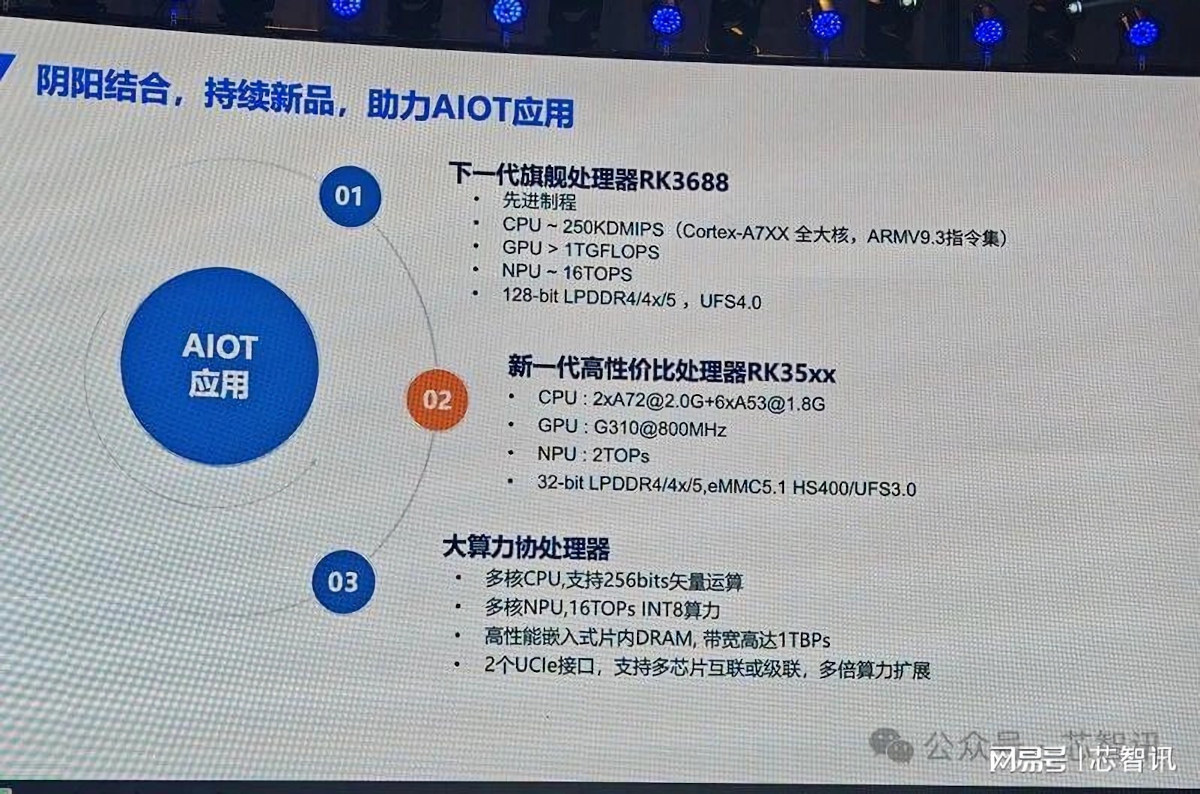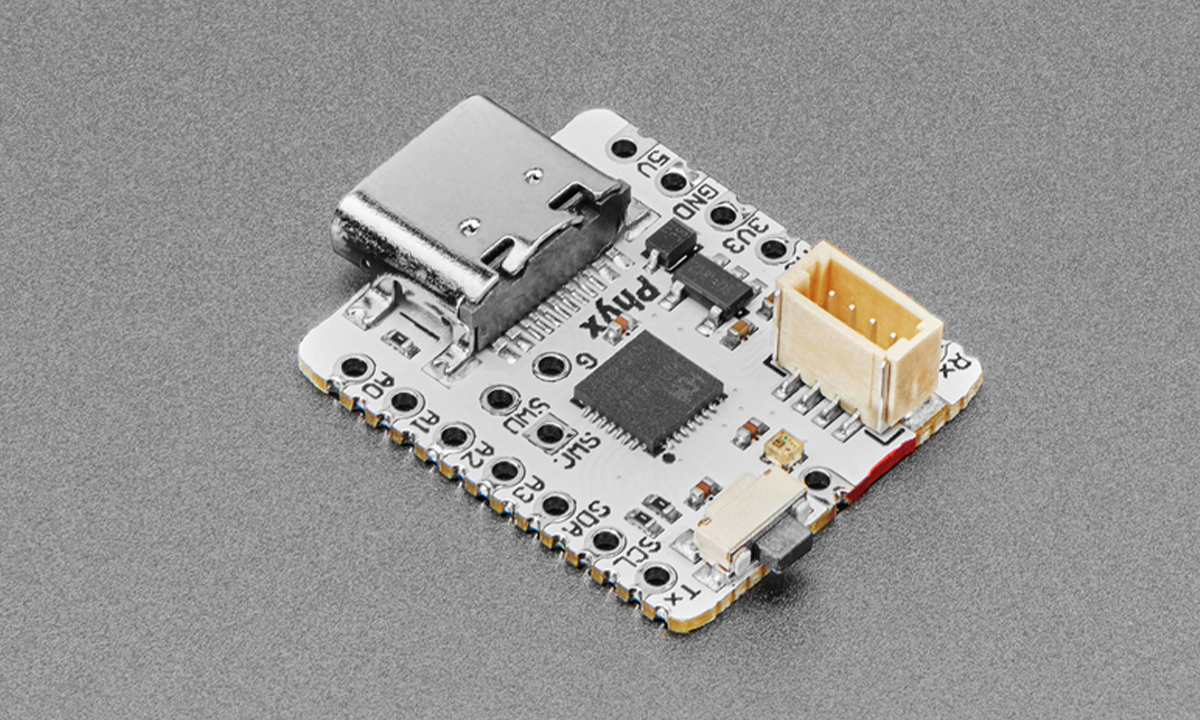The NXP RW612 is an Arm Cortex-M33 SoC with three radios, namely WiFi 6, Bluetooth 5.4, and 802.15.4 for Thread and Matter connectivity. It also has a small sibling called the RW610 without the 802.15.4 radio. I first came across RW61x chips, when Debashis wrote about the Trimension SR250 UWB chip mentioning it can work with “host processors like NXP’s i.MX, RW61x, and MCX families”. I initially thought it was a typo for the iW612 tri-radio solution introduced in 2022, and the RW612 is indeed similar, but it’s a complete wireless microcontroller/SoC with an Arm Cortex-M33 application core so it can be used independently as a host instead of a companion chip. NXP RW612 and RW610 specifications: MCU sub-system Core – 260 MHz Arm Cortex-M33 with TrustZone-M Memory On-chip 1.2 MB SRAM PSRAM interface for memory expansion Storage – Quad FlexSPI Flash XIP with on-the-fly decryption Peripheral interfaces Up to […]
Jetway JPIC-ADN1 fanless, industrial Pico-ITX SBC features Intel N97 or N200 CPU, dual display support
Jetway JPIC-ADN1 is a fanless pico-ITX SBC powered by an Intel N97 or N200 Alder Lake-N processor and targeted at industrial robotics applications. The JPIC-ADN1 supports up to 32GB of memory via a single-channel SO-DIMM slot. The SoC comes with UHD Graphics, supporting dual-display outputs via HDMI 2.0b and a 24-bit dual-channel LVDS interface. For storage, it features an M.2 B+M-Key socket and a SATA 3 port, plus an E-Key 2230 socket for wireless expansion. Gigabit Ethernet networking is handled by the RTL8111H GbE controller. Additionally, it has a serial header, 8-bit GPIO, SMBUS, watchdog timer, and much more. JPIC-ADN1 fanless SBC specification Alder Lake-N SoC (one or the other) Intel Processor N97 quad-core Alder Lake N-series processor with Intel UHD graphics; 12W TDP Intel Processor N200 quad-core processor @ up to 3.7 GHz (Turbo) with 6MB cache, 32EU Intel HD graphics @ up to 750 MHz; TDP: 6W Additional compatible CPUs available via regional sales […]
Arduino Nano Matter powered gamepad runs Quake at 27 FPS
Silicon Labs Solutions architect Nicola Wrachien has designed an Arduino Nano Matter gamepad for which he was successfully able to port Quake, a popular first-person shooter game. We have seen developers and engineers port doom on everything from toothbrushes to GPS receivers. Wrachien was previously able to port Doom on a Sparkfun Thing Plus Matter MGM240P at Silicon Labs’ 30th-anniversary celebration. But to make things more interesting and challenging he wanted to see if Quake could be run on the same MGM240SD22VNA MCU, and he succeeded. In the end, he could not only run the game, but he also implemented improved graphics (better than Doom), better physics, 3D rendering, and much more. This gamepad is built around an Arduino Nano Matter board which features MGM240SD22VNA MCU from Silicon Labs, along with 256KB of RAM, which is very low compared to Quake’s original system requirements which is a minimum of 8MB […]
DigiPort is an HDMI computer dongle powered by a Raspberry Pi CM4 (Crowdfunding)
Shivam Goyal, going under the Geeky Tronics name, has developed the DigiPort HDMI computer dongle powered by a Raspberry Pi CM4 system-on-module and designed to be connected directly to the back of an HDMI or through an HDMI cable. Since it does not support MHL, the DigiPort also needs a USB-C power source. You can add a keyboard and a mouse through its two USB 2.0 ports or via Bluetooth and network connectivity is managed through WiFi 5 making it a portable computer ready to use out of the box. DigiPort specifications: Supported System-on-Module – Raspberry Pi CM4 SoC – Broadcom BCM2711 quad-core Cortex-A72 processor @ 1.5 GHz System Memory – 1GB to 8GB LPDDR4-3200 SDRAM Storage – 0GB (CM4 Lite), or 8GB to 32GB eMMC flash Wireless – Dual-band WiFi 5 and Bluetooth 5.0 Storage – MicroSD card for OS when using a CM4 Lite module Video Output – […]
Flipper Zero hacking tool gets MicroPython support
Developer and engineer Oliver Fabel has developed a port that is designed to run MicroPython on the Flipper Zero. This port allows users to write programs for Flipper Zero in Python, instead of built-in JavaScript. Till now you can access GPIO, ADC, PWM, the speaker, buttons, the display, and infrared communication with this but it doesn’t have support for NFC or RFID yet, and it’s still under development. Previously we have written about various addon boards for the Flipper Zero like the Mayhem v2, the ESP8266 Deauther board, the CAN bus addon board, and other powerful alternatives of the Flipper like The M1 and the HackBat. Feel free to check those out if you are interested in the topic. The process is simple, and you don’t have to do a firmware update to work with MicroPython, you can download the application from the community-driven Flipper app store and are good […]
Pimoroni Pico Plus 2 W combines RP2350B MCU with Raspberry Pi RM2 Wi-Fi and Bluetooth module
Raspberry Pi released the Raspberry Pi Pico 2 a few months ago, featuring the new RP2350 chip. Despite several upgrades, it lacks wireless connectivity like Pico W. While there’s no official Raspberry Pi Pico 2 W yet, Pimoroni has developed an unofficial alternative, the Pimoroni Pico Plus 2 W, which integrates Wi-Fi and Bluetooth using a yet-to-be-formally-announced Raspberry Pi RM2 module and potentially set to appear in a future Pico 2W. The Pimoroni Pico Plus 2W board is powered by the Raspberry Pi RP2350B dual-core Arm Cortex-M33 microcontroller, features 16MB of QSPI flash with XiP support, 8MB of PSRAM, wireless connectivity, a USB Type-C port for power and data, and a Qwiic/STEMMA QT connector for breakout board integration. A few days ago, we covered the Pimoroni Explorer board, an electronic prototyping board built around the Raspberry Pi RP2350B chip. It features a 2.8-inch LCD screen, a speaker connector, and multiple […]
Upcoming Rockchip RK3688 Armv9.3 AIoT processor to feature a 16 TOPS NPU, UFS 4.0 interface
Rockchip has unveiled the RK3688 AIoT SoC with Armv9.3 Cortex-A7xx cores delivering up to 250K DMIPS (RK3588 delivers 93K DMIPS), a 1 TFLOPS GPU, and a 16 TOPS NPU. The new processor succeeds the Rockchip RK3588 octa-core Cortex-A76/A55 first announced in 2019, and also features a 128-bit LPDDR4/4x/5 memory interface, and a UFS 4.0 storage interface. That’s about all we know about the RK3688 right now, but we can also deduct it’s probably based on a new, yet-to-be-announced Arm Cortex-A7xx core, possibly named Cortex-A730 or Cortex-A735, because no Arm cores have been announced with the Armv9.3 architectures. The Arm Cortex-A725 CPU core unveiled last May still relies on Armv9.2, and I’d expect new Arm cores to be introduced within the next few months unless Rockchip made a mistake in the presentation slide above. Two other platforms were also announced at the same time starting with a new entry-level/mid-range RK35XX octa-core […]
Phyx LANA-TNY – A WCH CH32V203 RISC-V development board for embedded applications
The LANA-TNY is a compact development board created by Phyx and built around the CH32V203 RISC-V microcontroller. It offers a low-cost solution for embedded development and features a built-in USB bootloader, eliminating the need for an external programmer to flash the firmware. With a USB-C connector and a minimalist design, the board provides essential components to start development quickly. At its core, the Phyx LANA-TNY is powered by the CH32V203G6U6, a 32-bit RISC-V microcontroller from WCH Electronics, capable of running up to 144MHz with 1-cycle multiply/divide operations. It includes 10KB of SRAM, 32KB of single-cycle Flash, and 224KB of additional external flash for program or data storage, though the external memory operates at a slower speed. The CH32V203 microcontroller supports a range of peripherals, including ADC, timers, USB devices, UART, I2C, and SPI, making it suitable for a wide variety of embedded applications. Designed in the style of Adafruit’s QT […]


